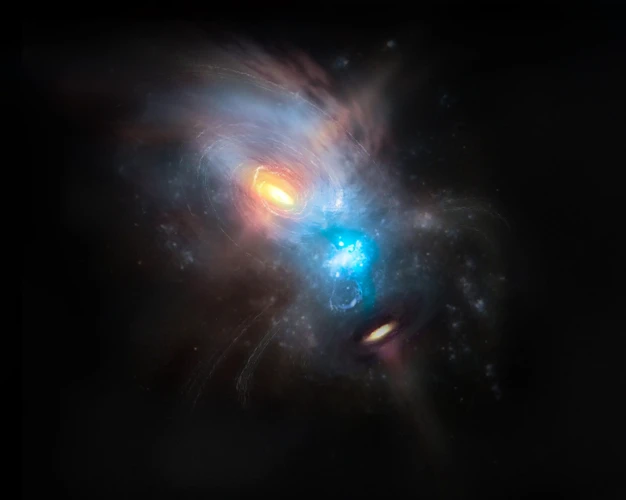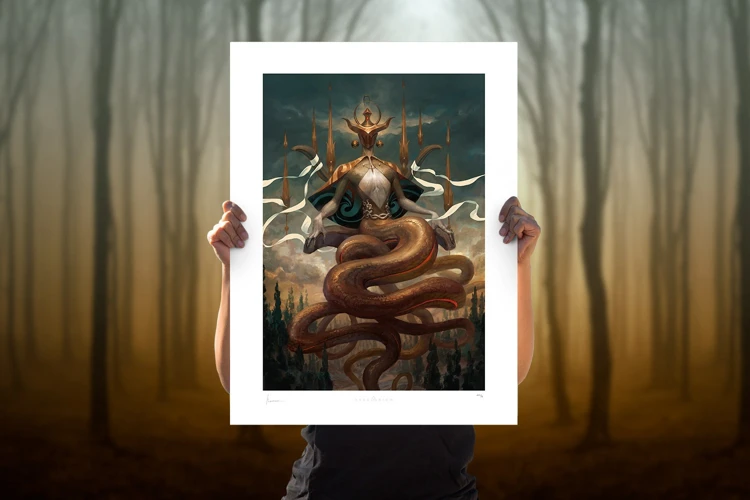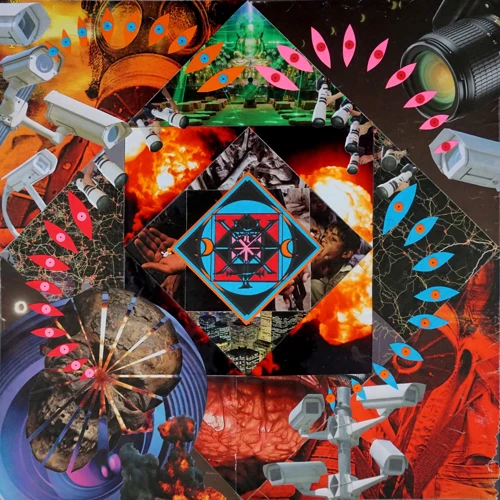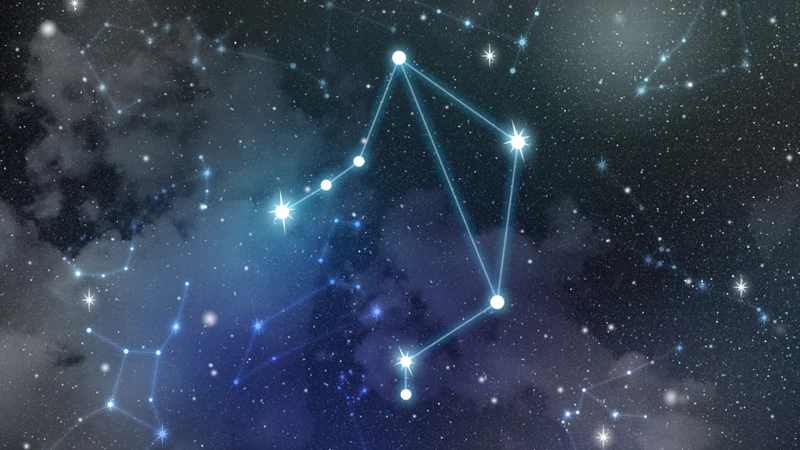The night sky has always fascinated humanity, serving as a celestial canvas filled with captivating formations known as constellations. While traditional constellations have deep historical and cultural significance, modern constellations have emerged in recent years, offering a new perspective on the celestial wonders above. In this article, we will delve into the cultural and symbolic importance of modern constellations, exploring their interpretation, connection to popular culture, and cross-cultural significance. We will examine the influence of these constellations on arts, literature, science, and technology, as well as their role in contemporary rituals and celebrations. Join us on this journey as we uncover the captivating world of modern constellations and their place in our collective consciousness.
Contents
- Historical Background
- The Symbolic Meaning
- Influence on Arts and Literature
- Scientific and Technological Integration
- Contemporary Rituals and Celebrations
- Modern Constellations in Popular Consciousness
- Conclusion
-
Frequently Asked Questions
- Why were traditional constellations based on mythological figures?
- How have modern constellations evolved in recent years?
- What is the significance of interpreting modern constellations?
- How have modern constellations influenced contemporary art?
- Are there literary references and inspirations related to modern constellations?
- What role do modern constellations play in astronomy and space exploration?
- What technological innovations have enhanced stargazing?
- What are some astrological practices associated with modern constellations?
- Are there any stargazing events and festivals that celebrate modern constellations?
- How do modern constellations impact identity and belonging?
- References
-
Frequently Asked Questions
- How were traditional constellations formed?
- Why did modern constellations emerge?
- What is the symbolic meaning behind modern constellations?
- How are modern constellations interpreted?
- How are modern constellations connected to popular culture?
- What is the cross-cultural significance of modern constellations?
- How do modern constellations influence arts and literature?
- How are modern constellations integrated into science and technology?
- What are some contemporary rituals and celebrations involving modern constellations?
- How do modern constellations impact identity and belonging?
- References
- Read More
Historical Background

The historical background of constellations is rich and diverse, dating back thousands of years. Traditionally, constellations were used by ancient civilizations to navigate the night sky and mark important celestial events. These early constellations, such as Orion, Ursa Major, and Draco, were based on mythological figures and stories. Over time, different cultures developed their own unique constellations, each with their own symbolic meanings attached. Fast forward to the modern era, and a new wave of constellations has emerged. These modern constellations reflect a changing societal landscape, incorporating elements from popular culture, science fiction, and even technological advancements. The introduction of modern constellations has sparked debate and discussion, with some embracing the new formations as a way to connect with contemporary society, while others argue for the preservation of traditional constellations and their historical significance. The exploration of modern constellations allows us to delve into the evolving relationship between humanity and the night sky, shedding light on the mystical meanings and planetary alignments that continue to captivate our imaginations.
Traditional Constellations
Traditional constellations have a rich and fascinating history, deeply rooted in ancient mythology and cultural beliefs. These constellations served as a way for ancient civilizations to navigate the night sky and understand the world around them. One well-known example is Orion, the mighty hunter, whose constellation is easily recognizable by his belt of three stars. Orion holds significant cultural importance across various societies, representing strength, bravery, and the changing seasons. Ursa Major, also known as the Great Bear or the Big Dipper, is another prominent constellation present in many different cultures. The seven stars that form its shape have been associated with various mythical figures and stories, symbolizing different aspects of nature and celestial events. These traditional constellations not only provided practical guidance for navigation but also served as a way for cultures to pass on stories and myths from generation to generation. Exploring the meanings and legends behind these constellations allows us to dive into the rich tapestry of ancient wisdom and gain a deeper understanding of our collective human history. For more on the mystical meanings and planetary alignments associated with constellations, you can check out our article on shedding light on mystical meanings and planetary alignments.
Emergence of Modern Constellations
The emergence of modern constellations marks a significant shift in our understanding and depiction of the night sky. These new constellations have their roots in the 17th and 18th centuries, when astronomers began to explore the southern hemisphere and discovered new stars and celestial objects. As the knowledge of the night sky expanded, astronomers sought to create new constellations that reflected the evolving scientific understanding of the universe. These modern constellations often drew inspiration from scientific achievements, mythology, and discoveries in astronomy. The International Astronomical Union (IAU) played a key role in formalizing and organizing these modern constellations, establishing official boundaries and naming conventions. One such example is the inclusion of the 13th zodiac sign, Ophiuchus, representing a serpent-bearer in Greek mythology. This addition sparked controversy and led to debates about astrological implications and compatibility with existing zodiac signs. The emergence of modern constellations not only expands our celestial map but also reflects the ever-changing nature of scientific exploration and our desire to connect with the stars above.
The Symbolic Meaning

Modern constellations hold a symbolic meaning that goes beyond their astronomical significance. These constellations often draw inspiration from various sources, including mythology, literature, and popular culture. Each modern constellation tells a unique story and carries its own symbolism. For example, the constellation Ophiuchus, often referred to as the 13th zodiac sign, represents the Greek god of medicine and healing. With its serpent symbolism, Ophiuchus symbolizes transformation, rebirth, and the power of healing. Other modern constellations, such as Draco and Phoenix, represent resilience, perseverance, and the ability to rise from the ashes. These symbolic meanings resonate with individuals who connect with these constellations, offering a sense of identity and personal reflection. The interplay of modern constellations with our understanding of astrology and compatibility between zodiac signs further enhances their symbolic significance, allowing individuals to explore the depths of their personalities and relationships. So, whether it’s embracing the mystical symbolism of Ophiuchus or exploring the compatibility of zodiac signs, modern constellations provide a gateway to delve into the intricacies of human nature and the cosmos.
Interpretation of Modern Constellations
The interpretation of modern constellations is a fascinating and multifaceted endeavor. These new formations, often inspired by popular culture and contemporary symbolism, provide a fresh lens through which to view the night sky. People assign personal and subjective meanings to these modern constellations, infusing them with their own stories and interpretations. One example is the constellation “Ophiuchus,” a 13th zodiac sign that sparked controversy and captured the public’s imagination. Some interpret Ophiuchus as a symbol of healing and transformation, while others see it as representing a shift in astrological perspectives. Additionally, modern constellations have found connections with compatibility and relationships, as people explore how these formations align with their zodiac signs. Understanding the interpretation of modern constellations allows us to connect with our individual and collective consciousness, as we find meaning and inspiration in the ever-evolving celestial tapestry.
Connection to Popular Culture
The connection between modern constellations and popular culture is undeniable. In recent years, these celestial formations have become sources of inspiration for various forms of entertainment, including movies, television shows, and music. For example, the constellation of Orion, with its distinctive belt of three stars, has been featured prominently in science fiction franchises like “Star Wars” and “Guardians of the Galaxy,” adding a touch of cosmic wonder to these beloved stories. Similarly, the constellation of Ursa Major, also known as the Big Dipper, has made appearances in popular culture, with its recognizable shape often used as a symbol for adventure and exploration. Additionally, the emergence of new constellations such as Ophiuchus, considered by some as the 13th zodiac sign, has sparked discussions and debates, making its way into internet memes and astrology-related content. This connection to popular culture not only brings awareness to the beauty of the night sky but also fosters a sense of fascination and intrigue among individuals who may not have previously paid much attention to the stars above. To explore the compatibility of zodiac signs in relationships, astrology enthusiasts often look to the patterns and alignments of modern constellations, seeking insights and guidance for romantic connections. This fusion of celestial symbolism with popular culture continues to shape our perception of modern constellations and their place in contemporary society. Thus, the influence of popular culture on modern constellations is a testament to our enduring fascination with the cosmic realm and its ability to capture our collective imagination.
Cross-Cultural Significance
The cross-cultural significance of modern constellations is profound, as these celestial formations transcend geographical boundaries and cultural differences. While traditional constellations have specific meanings within their respective cultures, modern constellations have the ability to resonate with people from various backgrounds. This cross-cultural significance is partly due to the inclusion of popular culture references in modern constellations. For example, constellations inspired by famous characters from books, movies, and television shows can evoke a sense of familiarity and connection among individuals who share a common interest in these cultural phenomena.
Modern constellations also facilitate cross-cultural conversations and exchanges. As people from different cultures discover and discuss these new constellations, they have the opportunity to learn about each other’s beliefs, stories, and perspectives. This exchange of knowledge and appreciation for diverse cultures promotes a deeper understanding and respect for one another.
The emergence of modern constellations highlights the universality of human fascination with the night sky. Across cultures and throughout history, humans have looked up at the stars and pondered their meaning and significance. The introduction of modern constellations reinforces the idea that we are all connected by our shared awe and wonder for the cosmos.
In the realm of astrology, modern constellations have also had an impact on cross-cultural interpretations and horoscope readings. While the traditional zodiac consists of 12 signs, the inclusion of the 13th zodiac sign, Ophiuchus, symbolizes the blending of different astrological practices and beliefs. This expansion of the zodiac brings together different cultural perspectives on astrology and encourages individuals to explore the compatibility of zodiac signs and relationships.
The cross-cultural significance of modern constellations extends beyond physical borders, bridging the gaps between cultures, fostering intercultural dialogue, and showcasing the universal human fascination with the wonders of the night sky.
Influence on Arts and Literature

The influence of modern constellations on arts and literature has been profound, igniting the imaginations of artists and writers around the world. Contemporary artists have explored new interpretations of these celestial formations, incorporating them into their artwork to evoke a sense of wonder and cosmic connection. Paintings, sculptures, and installations have embraced the symbolism and beauty of modern constellations, using them as motifs to explore themes of identity and the vastness of the universe. In literature, modern constellations have inspired authors to create compelling narratives set in imaginative worlds, where the very fabric of the story is woven with the celestial wonders above. These constellations serve as beacons of inspiration, guiding writers to delve into the depths of human emotions and existential questions. The inclusion of modern constellations, such as the intriguing Ophiuchus symbol, adds layers of complexity and intrigue to literary works. The compatibility between these constellations and the characters they represent adds depth to relationships and enhances the overall storytelling experience. Through their integration into arts and literature, modern constellations have become a source of creativity and contemplation, expanding our understanding of the cosmos and our place within it.
Contemporary Artistic Depictions
Contemporary artistic depictions of modern constellations have become a captivating medium for artists to explore and express their creativity. Through various forms of art, including paintings, sculptures, installations, and digital artwork, artists have reimagined and reinterpreted these celestial formations in unique and thought-provoking ways. Some artists focus on capturing the beauty and intricacy of modern constellations through detailed and realistic representations, while others take a more abstract approach, using bold colors and innovative techniques to convey the essence and symbolism of these constellations. One example of contemporary artistic depictions is the use of mixed media, combining traditional painting techniques with digital elements to create a visually stunning and multidimensional artwork. These modern interpretations of constellations often incorporate elements of popular culture, science fiction, and fantasy, creating a fusion of traditional celestial motifs with contemporary themes. Artists also explore the relationship between modern constellations and human emotions, using them as metaphors for personal experiences and spiritual journeys. By showcasing these artistic depictions, artists not only offer a fresh perspective on constellations, but also invite viewers to immerse themselves in a world where imagination and creativity collide with the cosmic realm. For a deeper understanding of the artistic representation of constellations, check out the symbolic meanings of the 13th zodiac sign, Ophiuchus, and how it has influenced artists in their reinterpretation of celestial formations.
Literary References and Inspirations
Literature has long been intertwined with the magic and wonder of constellations, drawing inspiration from these celestial formations. Authors and poets throughout history have incorporated references to constellations in their works, using them as symbols, metaphors, and sources of inspiration. From Shakespeare’s Romeo and Juliet, where Romeo exclaims, “Two of the fairest stars in all the heaven, having some business, do entreat her eyes to twinkle in their spheres,” to Emily Dickinson’s poem “Ah, Moon – and Star,” where she meditates on the eternal beauty of the night sky, constellations have played a significant role in literary creations. These references often evoke a sense of awe and mystery, capturing the vastness of the universe and the human quest for meaning. Whether it is the enchanting tales of Greek mythology or the cosmic imagery evoked by modern science fiction, constellations continue to be a powerful source of inspiration for writers and readers alike. As literature evolves, so too do the ways in which constellations are interpreted and integrated into storytelling. The celestial realm of constellations serves as a metaphorical backdrop, reflecting the human experience and exploring themes of love, fate, and the interconnectedness of all things. By delving into the literary references and inspirations associated with constellations, we gain a deeper appreciation for the profound impact they have had on the world of literature and the human imagination.
Scientific and Technological Integration

The integration of science and technology has played a significant role in our understanding and appreciation of constellations. Advancements in astronomy and space exploration have provided us with in-depth knowledge about the stars, galaxies, and cosmic phenomena. Scientists have been able to identify and study new celestial objects, leading to the inclusion of modern constellations in our maps of the night sky. Technology has revolutionized stargazing, making it more accessible and engaging for enthusiasts. With the development of smartphone apps, telescopes, and virtual reality experiences, individuals can now explore constellations with ease and immerse themselves in a virtual universe. These advancements have not only expanded our scientific knowledge but have also fueled our curiosity and fascination with the celestial realm. The integration of science and technology has opened up a world of possibilities, enabling us to unravel the mysteries of the cosmos and delve deeper into the realm of the stars and their connections.
Astronomy and Space Exploration
Astronomy and space exploration have been greatly influenced by modern constellations, contributing to our understanding of the universe and fueling our desire to explore beyond Earth’s boundaries. The study of modern constellations plays a crucial role in the field of astronomy, enabling scientists to map out and observe celestial objects with greater accuracy. By identifying specific modern constellations, astronomers can locate and study stars, galaxies, and other celestial phenomena. With the advancement of technology, space exploration has become more intricate and ambitious, with spacecraft and telescopes venturing into the depths of space. Modern constellations serve as navigational aids for spacecraft, helping to guide them through the vast expanse of the cosmos. The influence of modern constellations is evident in the names and symbolism of space missions and scientific discoveries. For example, NASA’s Apollo missions, named after the Greek god associated with the Sun, showcased the connection between modern constellations and space exploration. This integration of modern constellations into astronomy and space exploration highlights their significance in our quest to explore and understand the universe. For those fascinated by the celestial wonders and their correlation with human experiences, exploring the compatibility of zodiac signs in relationships can provide additional insights and perspectives.
Technological Innovations for Stargazing
Technological innovations have revolutionized the way we explore and observe the night sky, making stargazing more accessible and immersive than ever before. One notable advancement is the development of powerful telescopes equipped with cutting-edge features. These telescopes employ sophisticated optics and imaging technologies, allowing enthusiasts to capture breathtaking images of celestial objects and distant galaxies. Additionally, digital star maps and mobile applications have emerged as indispensable tools for amateur astronomers. These apps utilize GPS technology to provide real-time information about the position and identification of stars, planets, and constellations. They offer interactive experiences, enabling users to point their devices towards the sky and instantly learn about the celestial objects in their field of view. The integration of augmented reality (AR) has added a new dimension to stargazing. AR apps use the device’s camera to overlay information and graphics onto the live view of the night sky, offering an interactive and educational experience. This blend of technology and astronomy has sparked a renewed interest in stargazing, attracting a new generation of sky gazers who are drawn to the seamless integration of science and innovation. With these technological advancements, stargazing has become not only a personal journey of exploration but also an opportunity to engage with the wonders of the universe in a deeply immersive and educational way.
Contemporary Rituals and Celebrations

Contemporary rituals and celebrations involving modern constellations have become a popular way for people to connect with the cosmos and celebrate celestial wonders. Astrological practices, which have been around for centuries, continue to play a significant role in many cultures. People consult their zodiac signs and horoscopes to gain insight into their personalities, relationships, and future prospects. Stargazing events and festivals also draw in enthusiasts and curious individuals alike, providing opportunities to observe and learn about the night sky. These gatherings often feature lectures, workshops, and telescope viewings, allowing participants to deepen their knowledge of constellations and their significance. Additionally, stargazing retreats provide a serene setting for individuals to reconnect with nature and contemplate their place in the universe, fostering a sense of awe and introspection. Whether it’s exploring the compatibility of zodiac signs or immersing oneself in the wonders of the night sky, contemporary rituals and celebrations serve as a powerful reminder of humanity’s enduring fascination with the cosmos.
Astrological Practices
Astrological practices encompass a wide range of beliefs and rituals centered around the study of celestial bodies and their influence on human behavior and destiny. Astrology is based on the idea that the positions and movements of the stars, planets, and other celestial bodies at the time of a person’s birth can provide insight into their personality traits, relationships, and even future events. Astrologers use birth charts, which map the positions of celestial bodies at the time of an individual’s birth, to interpret how these cosmic alignments may shape various aspects of their life. These birth charts are divided into twelve zodiac signs, each associated with specific personality traits and characteristics. People often turn to astrology to gain a deeper understanding of themselves and their relationships, seeking compatibility between different zodiac signs to navigate their personal and professional connections.
In addition to individual readings, astrological practices are also employed in broader societal contexts. They can be used to determine auspicious dates for important events or to provide guidance on career choices, financial decisions, and even medical treatments. Astrology has a significant following around the world, with many people consulting astrologers for guidance and participating in astrological rituals and ceremonies.
Some of the most popular astrological practices include horoscope readings, which offer daily, weekly, or monthly predictions based on an individual’s zodiac sign. These horoscopes provide insight into potential opportunities, challenges, and lucky days.
It is important to note that while astrology holds deep cultural significance for many people, it is not considered a scientific discipline by the mainstream scientific community. Yet, its enduring popularity and widespread belief demonstrate the continued human fascination with the stars and our desire to find meaning in the cosmos. Whether individuals turn to astrology for guidance, entertainment, or self-reflection, it remains an integral part of contemporary consciousness, intertwining the celestial and human realms in a quest for understanding and connection.
Stargazing Events and Festivals
Stargazing events and festivals have gained significant popularity in recent years, as people yearn to reconnect with the wonders of the night sky. These events provide opportunities for astronomy enthusiasts, amateur stargazers, and even casual observers to come together and celebrate the beauty of the cosmos. Organizers often choose locations with minimal light pollution, ensuring optimal conditions for observing the stars and constellations. During these events, participants can engage in various activities such as guided stargazing sessions, telescope viewings, and informational workshops conducted by experts in the field. Some stargazing events incorporate educational programs, where attendees can learn about the different constellations, their mythology, and scientific discoveries associated with them. These gatherings also foster a sense of community and camaraderie among like-minded individuals who share a passion for astronomy and stargazing. Stargazing festivals often feature live music performances, storytelling sessions, and even outdoor film screenings under the night sky, creating a unique and memorable experience for attendees. These events provide an opportunity for people to explore their own spirituality and connect with the vastness of the universe, as they witness the beauty and grandeur of the stars. Whether it’s a small local gathering or a large-scale international festival, stargazing events bring people together to marvel at the celestial wonders above and deepen their understanding of the cosmos. To learn more about the role of astrology and zodiac signs in relationships, check out our guide on zodiac sign compatibility.
Modern Constellations in Popular Consciousness

Modern constellations have become deeply ingrained in popular consciousness, shaping our identities and sense of belonging. These celestial formations, often inspired by popular culture icons, have captured the hearts and minds of people around the world. With constellations like “Harry Potter’s Scar” or “Superhero Team,” individuals can find a sense of connection and nostalgia. These modern constellations are not only present in our imaginations but also in marketing and branding campaigns. Companies strategically incorporate these celestial symbols into their logos and advertisements to tap into the emotional resonance they hold for consumers. Whether it be through finding personal meaning or engaging in consumerism, modern constellations have undeniably left their mark on our collective consciousness.
Impact on Identity and Belonging
The impact of modern constellations on identity and belonging cannot be understated. These celestial formations have the power to evoke a sense of connection and belonging among individuals and communities. In a rapidly changing world, where traditional social structures and cultural identities are evolving, modern constellations offer a sense of familiarity and shared experience. For example, constellations based on popular fictional characters or iconic symbols can create a sense of identity for fans of a particular franchise or cultural movement. These constellations become symbolic representations of individuality and affiliation. They provide a platform for like-minded individuals to come together, forming communities that celebrate their shared interests and values. For those who may feel disconnected or displaced, modern constellations can serve as a source of comfort and belonging. By finding meaning and significance in these celestial arrangements, individuals can forge a sense of identity in a world that often feels fragmented and uncertain. Whether it is through the adoption of a favorite character’s constellation as a personal emblem or the use of modern constellations as a way to express one’s passions and values, these celestial formations have the power to shape and strengthen individual and collective identities. The impact of modern constellations on identity and belonging extends beyond personal connections. They can also be used as powerful marketing and branding tools. Companies and organizations can leverage the symbolism and resonance of these constellations to build connections with their target audience and create a sense of community around their brand. By aligning themselves with certain modern constellations, companies can tap into the emotional and cultural associations tied to these celestial formations, positioning their products or services as a reflection of the values and interests shared by their target market. Modern constellations play a significant role in shaping individual and collective identities, fostering a sense of belonging, and serving as powerful tools for marketing and branding.
Use in Marketing and Branding
Modern constellations have not only captured the imagination of stargazers and astronomers but also found their way into various marketing and branding strategies. Companies have started incorporating these celestial formations to add a touch of wonder and mystique to their products and campaigns. For example, a luxury watch brand might use the name of a modern constellation to evoke a sense of timelessness and elegance. Similarly, a beauty brand may create a celestial-themed makeup collection, featuring shades inspired by the colors of the night sky and naming the products after modern constellations. The use of modern constellations in marketing and branding helps create a unique and intriguing narrative around products and services, tapping into the fascination and symbolism associated with the stars. By aligning themselves with the cosmic imagery, brands can evoke a sense of aspiration, adventure, and interconnectedness with the universe. This marketing strategy not only appeals to astrology enthusiasts but also resonates with a broader consumer base, as more people become interested in exploring the cultural significance and beauty of the night sky.
Conclusion

In conclusion, modern constellations have become a significant cultural phenomenon, bridging the gap between the celestial realm and human experience. These newly introduced formations have brought fresh interpretations, symbols, and narratives to the night sky, captivating individuals across different cultures and generations. The infusion of popular culture and technological advancements has led to the creation of constellations that resonate deeply with contemporary society. From artistic depictions to literary inspirations, constellations have found their way into various forms of creative expression. Scientifically, these constellations continue to contribute to our understanding of the universe and serve as a catalyst for space exploration and technological innovations. Moreover, modern constellations have also found their place in contemporary rituals and celebrations, adding a touch of mysticism and wonder to astrological practices and stargazing events. In the realm of identity and belonging, these constellations have become a means of connection and self-expression for individuals who seek a sense of belonging and affirmation. Additionally, the use of modern constellations in marketing and branding has further amplified their cultural significance and commercial value. As we continue to ponder the celestial wonders above, modern constellations offer a dynamic and ever-evolving narrative that enriches our understanding of the cosmos and the human experience within it.
Frequently Asked Questions

Why were traditional constellations based on mythological figures?
Traditional constellations were based on mythological figures because ancient civilizations often used stories and narratives to explain natural phenomena. These mythological figures were woven into the fabric of culture and served as a way to understand and navigate the celestial world.
How have modern constellations evolved in recent years?
Modern constellations have evolved in recent years by incorporating elements from popular culture, science fiction, and advancements in technology. These new formations reflect the changing interests and values of contemporary society.
What is the significance of interpreting modern constellations?
Interpreting modern constellations allows us to explore the cultural and symbolic meanings attached to these formations. It offers insights into our collective consciousness and the ways in which we connect with the night sky.
How have modern constellations influenced contemporary art?
Modern constellations have influenced contemporary art by inspiring new artistic depictions and installations. Artists draw upon these formations to explore themes of identity, belonging, and our place in the universe.
Yes, modern constellations have served as literary references and inspirations in various works of literature. Writers often incorporate these formations to add depth and symbolism to their storytelling.
What role do modern constellations play in astronomy and space exploration?
Modern constellations play a crucial role in astronomy and space exploration by providing reference points for celestial navigation and mapping. Scientists and astronauts rely on these formations to navigate the vastness of space.
What technological innovations have enhanced stargazing?
Technological innovations such as smartphone apps, telescopes with advanced tracking capabilities, and augmented reality tools have enhanced the experience of stargazing. These developments make it easier for enthusiasts to identify and explore modern constellations.
What are some astrological practices associated with modern constellations?
Astrological practices associated with modern constellations involve studying the influence of these formations on personal traits, compatibility, and horoscopes. Astrologers interpret the positions of modern constellations to provide insights into an individual’s life and personality.
Are there any stargazing events and festivals that celebrate modern constellations?
Yes, there are stargazing events and festivals organized around the world that celebrate modern constellations. These gatherings provide opportunities for enthusiasts to connect with the night sky, learn about celestial formations, and engage in astronomical observations.
How do modern constellations impact identity and belonging?
Modern constellations can impact identity and belonging by providing individuals and communities with a sense of connection to the larger universe. They offer a shared cultural framework and a sense of awe and wonder that can deepen our understanding of ourselves and our place in the cosmos.
References
Frequently Asked Questions

How were traditional constellations formed?
Traditional constellations were formed by ancient civilizations who identified patterns of stars in the night sky and assigned them visual representations, often based on mythological or cultural significance.
Why did modern constellations emerge?
Modern constellations emerged as a way to recognize and celebrate the achievements of contemporary society, including notable individuals, scientific discoveries, and technological advancements.
What is the symbolic meaning behind modern constellations?
The symbolic meaning behind modern constellations varies, but they often represent ideas such as exploration, innovation, unity, and the interconnectedness of different cultures.
How are modern constellations interpreted?
Modern constellations can be interpreted in various ways depending on the individual or culture. Some may see them as a source of inspiration or a reflection of their aspirations, while others may find personal or spiritual significance in their arrangement.
How are modern constellations connected to popular culture?
Modern constellations have become popular symbols in popular culture, appearing in movies, books, music, and even fashion. They often represent adventure, wonder, and the mysteries of the universe.
What is the cross-cultural significance of modern constellations?
Modern constellations have cross-cultural significance as they are recognized and appreciated by people from different parts of the world. They serve as a common thread that connects diverse communities and fosters cultural exchange.
How do modern constellations influence arts and literature?
Modern constellations serve as a source of inspiration for contemporary artists and writers. They can be depicted in various artistic forms, such as paintings, sculptures, poems, and novels, providing a rich and imaginative canvas for creative expression.
How are modern constellations integrated into science and technology?
Modern constellations play a crucial role in astronomy and space exploration. Scientists use them to map and navigate the night sky, while technological innovations such as star-gazing apps and telescopes enhance public engagement and understanding of the cosmos.
What are some contemporary rituals and celebrations involving modern constellations?
Astrological practices and horoscopes often refer to modern constellations to offer insights and predictions. Stargazing events and festivals are also held worldwide, where people gather to observe and appreciate the beauty of the night sky, including modern constellations.
How do modern constellations impact identity and belonging?
Modern constellations can have a profound impact on an individual’s sense of identity and belonging. They can evoke a sense of connection to something greater than oneself, instill a feeling of unity with others who share a similar interest, and contribute to a sense of wonder and awe about the vastness of the universe.
References
- Why Do Constellations Exist? (2023 Easy Guide)
- Why do different cultures see such similar meanings in the …







